The retail sector is a vital component in the everyday lives of consumers. It’s a dynamic industry, continually adapting to new trends, technological advancements, and shifts in consumer behavior. The advent of data analytics has revolutionized retail, providing merchants with potent tools to refine their operations, enhance customer experiences, and boost sales.
Through the analysis of vast data sets, retailers can streamline various business processes, aiding in making well-informed choices regarding product ranges, pricing, and marketing tactics.
Retail analytics eliminates the need for guesswork. While experienced employees have traditionally been a valuable source of knowledge, the aging out of the baby boomer generation from the workforce means that there will be fewer seasoned insights to rely on.
Analytics plays a crucial role in helping retailers analyze this data and proactively prepare for future developments.
As business leaders gear up for another decade of digital transformation, take a look at some retail organizations that have embraced data analytics to become more customer-focused and analytically savvy in the digital era.
Defining Retail Data Analytics
Retail data analytics involves leveraging extensive datasets, commonly referred to as big data, to enhance various aspects of the retail industry, including pricing optimization, supply chain management, and fostering stronger customer loyalty.
Big data encompasses vast quantities of information used to unveil patterns, trends, and correlations, particularly concerning human behavior and interactions. Traditionally, big data has been characterized by three key dimensions: volume, velocity, and variety.
In the context of the retail sector, big data signifies a heightened comprehension of consumer shopping patterns and effective methods for attracting new clientele.
Moreover, these extensive datasets aid in forecasting industry trends and making strategic decisions grounded in comprehensive market analysis.
How Data Analytics Transforms Retail Businesses
The landscape of the retail store is in a state of constant change, with data analytics significantly influencing its future direction. Key technological advancements are poised to play a vital role in this evolution.
Technologies such as real-time retail analytics, artificial intelligence, and machine learning are set to become increasingly integral. These tools can assist retailers in refining their marketing approaches, boosting sales, and offering a seamless consumer experience. The use of these technologies within data analytics frameworks in retail is anticipated to grow.
With the escalating volume of data generated by retailers, investing in strong data security measures is crucial to safeguard customer information. The application of big data analytics enables retailers to glean valuable insights from this burgeoning data, enhancing customer segmentation and engagement and driving sales. As data volumes expand, the importance of data security intensifies.
The ongoing development of data analytics underscores the necessity for retailers to remain at the forefront, harnessing data’s potential to foster growth and profitability. The growing implementation of AI and machine learning promises more tailored shopping experiences and a more nuanced comprehension of consumer behavior.
Key Components of Retail Data Analytics
In the dynamic world of retail, staying competitive requires more than just intuition and good products—it demands a keen understanding of your data.
This section will delve into the key components of retail data analytics and how they can transform your business.
Customer Data and Its Importance
Customer data analytics plays a pivotal role in deciphering shopper behavior, preferences, and trends. Here’s why it’s vital:
Customer Profiling: Customer data analytics helps you create detailed profiles of your customer base. You’ll gain insights into demographics, shopping habits, and purchasing history.
Personalization: Armed with this data, you can tailor your marketing efforts, from personalized product recommendations to targeted promotions. This personal touch enhances customer satisfaction and loyalty.
Demand Forecasting: Customer data helps in demand forecasting. You’ll be better prepared to stock the right products in the right quantities, avoiding understocking or overstocking situations.
Competitive Edge: Analyzing customer data allows you to stay ahead of competitors. Identify trends and preferences, and adapt your strategies accordingly.
Inventory Management and Optimization
Efficient inventory management is the bedrock of retail success. Retail data analytics revolutionizes the way you manage and optimize your inventory:
Real-Time Inventory Insights: With data analytics, you can track your inventory in real-time. Know what’s in stock, what’s selling, and what’s not, all at your fingertips.
Reduce Costs: Avoid unnecessary costs associated with excess inventory. Data-driven insights enable you to order the right amount of stock, reducing storage expenses.
Minimize Out-of-Stock: By analyzing historical sales data and seasonality, you can minimize out-of-stock occurrences, ensuring that customers find what they want when they visit your store.
Price Optimization: Implement dynamic pricing strategies based on real-time demand and competitor pricing. Maximize profitability without sacrificing customer satisfaction.
Price Optimization Strategies
Retail data analytics empowers you to optimize your pricing strategies effectively:
Competitor Analysis: Analyze your competitors’ pricing and promotions. Adjust your prices to remain competitive and capture market share.
Dynamic Pricing: Implement dynamic pricing algorithms that respond to changes in demand, seasonality, and market conditions. Maximize revenue without manual adjustments.
Promotions and Discounts: Use data to identify the most effective times for promotions and discounts. Ensure your offers resonate with your target audience.
Customer Perception: Understand how pricing impacts customer perception and buying decisions. Fine-tune your pricing strategy to strike the right balance between value and profit.
Applications of Data Analytics in Retail
This section will explore how data analytics is applied in various aspects of retail operations, helping businesses thrive in today’s market.
Customer Segmentation
Data analytics plays a pivotal role in customer segmentation, offering invaluable insights into customer demographics, buying habits, and preferences.
This segmentation enables retailers to tailor marketing strategies effectively, ensuring messages resonate deeply with specific customer groups.
Retailers leverage this data to implement dynamic pricing strategies, catering to the varied sensitivities of different customer segments. This targeted approach not only enhances customer engagement and loyalty but also drives efficient resource allocation and higher profitability.
Predictive Analytics for Demand Forecasting
By analyzing historical sales data and external factors like seasonality and market trends, retailers can forecast product demand with precision.
They can ensure that products are in stock when and where they are needed, minimizing overstocking and understocking issues of the retail market.
Personalized Shopping Experiences
The application of data analytics is revolutionizing how personalized shopping experiences are crafted for customers. Retail companies are adeptly using data analytics to understand and cater to individual customer preferences and needs, both online and in-store.
By analyzing a customer’s past purchases and browsing behaviors, retailers can accurately suggest products that align with each customer’s unique tastes and preferences.
This level of personalization not only enhances the overall shopping experience but also significantly increases the potential for cross-selling and upselling.
Dynamic Pricing Strategies
By using real-time pricing data, you can set prices that are not only competitive but also align with consumer expectations, ultimately boosting sales and profitability.
Data analytics equips retailers with the tools to stay competitive. By monitoring competitor pricing and market conditions, retailers can make informed pricing decisions to capture market share.
Top Retail Companies That Leveraged Data Analytics the Right Way
In today’s data-driven retail landscape, several top-tier companies have harnessed the power of data analytics to transform their operations and customer experiences. Let’s explore these retail giants.
Sephora

Sephora’s Beauty Insider Program: Sephora, the cosmetic retail giant, has excelled in utilizing customer data to enhance the shopping experience. Their Beauty Insider program collects data on customer preferences, makeup preferences, and purchase history along with a virtual beauty makeover.
This data fuels personalized product recommendations and tailored promotions, creating a more engaging shopping experience. Retail companies leverage apps on mobile phones and websites to engage customers and collect valuable data.
In-Store Technology: Sephora incorporates data analytics into their in-store experiences. By analyzing customer behavior in physical stores, they optimize store layouts and product placements. This data-driven approach ensures that customers have a seamless shopping journey, both online and offline.
Target
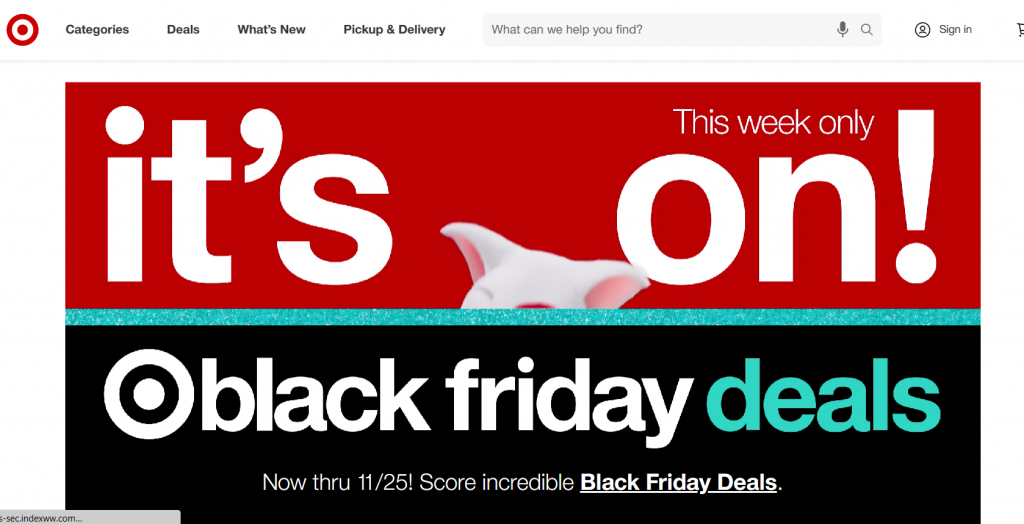
Precision in Product Recommendations: Target has embraced data analytics to refine its product recommendation engine. By analyzing past purchase behavior and browsing history, Target suggests products that align with individual preferences. This personal touch has led to increased sales and customer loyalty.
Supply Chain Optimization: For retail giants with a significant presence, managing multiple stores is a complex yet essential aspect of their operations. Target employs data analytics to streamline its supply chain.
Accurate demand forecasting and inventory management ensure that products are readily available when customers need them. This efficiency minimizes costs and maximizes profits.
Costco
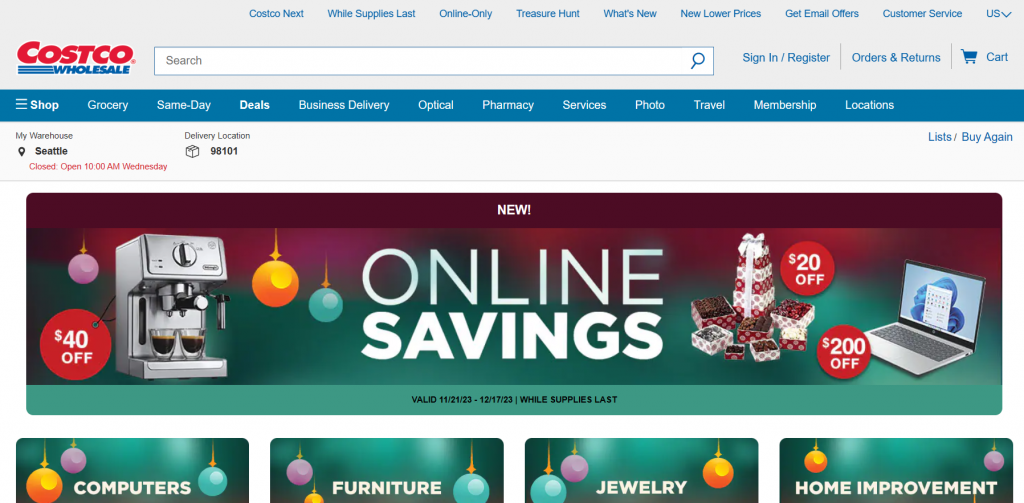
Membership Data: Costco, known for its membership model, leverages data analytics to understand customer behavior. They track purchasing habits, preferences, and member demographics. This data informs inventory decisions and product offerings, ensuring they cater to their members’ needs effectively.
Pricing Strategies: Costco uses data analytics to optimize pricing strategies. By analyzing price elasticity and competitor pricing, they set prices that attract cost-conscious shoppers while maintaining profitability.
Amazon
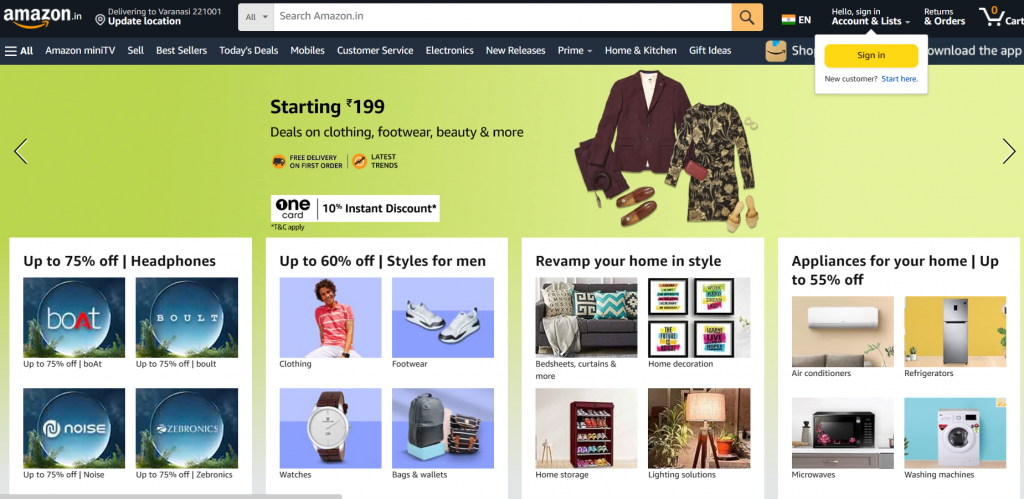
Personalization at Scale: Amazon, the e-commerce giant, is renowned for its data-driven personalization. They analyze vast amounts of customer data to recommend products, curate shopping experiences, understand consumer behavior and provide targeted advertisements.
This approach keeps customers engaged and coming back for more. The adoption of cloud-based software offers scalability, flexibility, and accessibility, making them ideal for businesses.
Logistics and Delivery: Amazon’s data analytics extends to logistics and delivery. They use predictive analytics to anticipate demand and optimize delivery routes, ensuring that customers receive their orders quickly and efficiently.
IKEA

Customer-Centric Approach: IKEA employs data analytics to gain insights into customer preferences and needs. This understanding drives product development and enhance retail store analytics. By tailoring their offerings to customer demands, IKEA enhances the overall shopping experience.
Virtual Reality Showroom: IKEA’s innovation extends to technology like virtual reality. They use data analytics to create virtual showrooms, allowing customers to visualize how furniture will look in their homes. This immersive experience aids purchasing decisions. They also have an augmented reality app.
Kate Spade
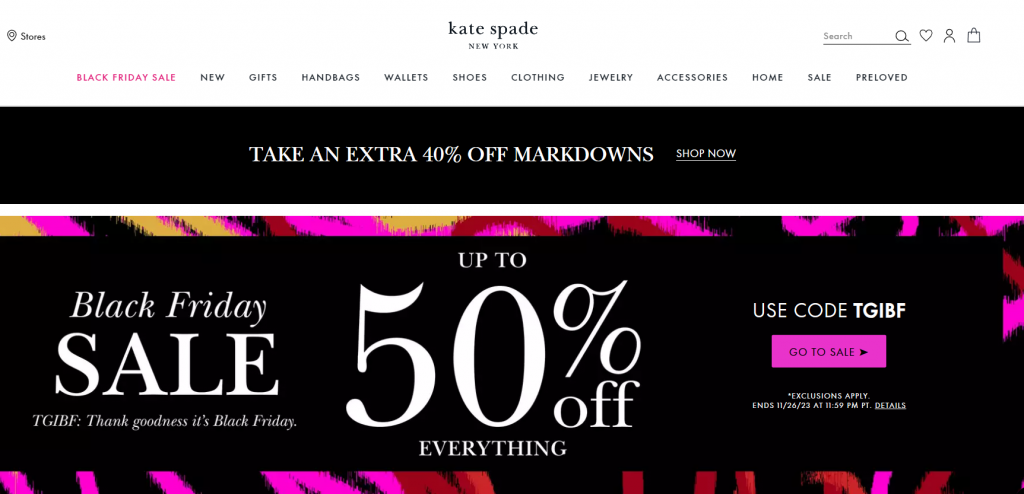
Demand Forecasting: Kate Spade utilizes data analytics for demand forecasting. This ensures the availability of popular products and prevents overstocking or stockouts.
Customer Insights: Data analytics provides Kate Spade with valuable customer insights. Understanding preferences and behavior aids in targeted marketing campaigns and product launches. It has also helped them with their online sales.
Nordstorm

Customer Engagement: Nordstrom uses data analytics to enhance customer engagement. Personalized recommendations and tailored promotions encourage repeat business. Even with multiple locations it makes it easy for store managers to get the optimal output.
Returns Optimization: Nordstrom optimizes returns processing through data analytics, reducing costs and improving the customer returns experience.
Transform Your Retail Company with GeoIQ’s Data Analytics
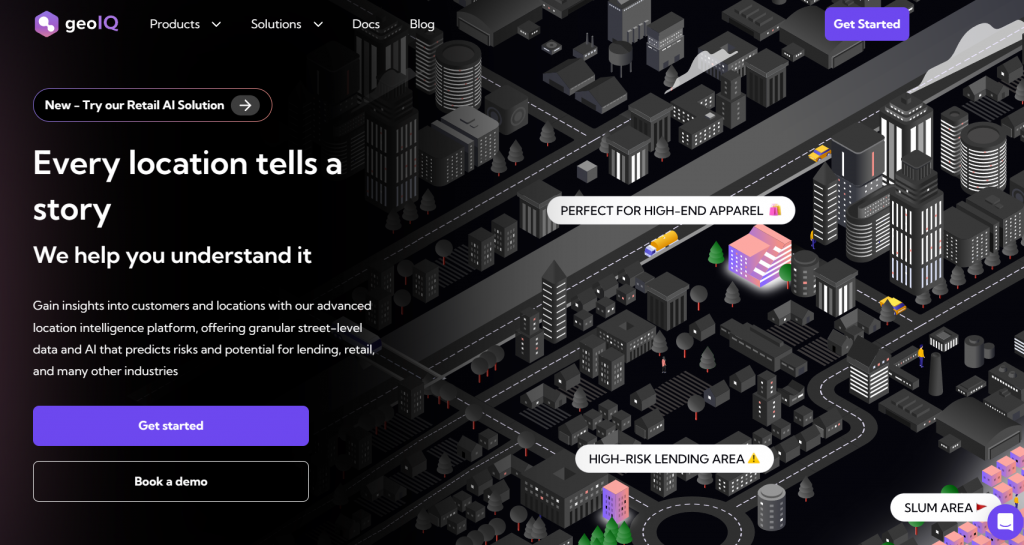
In the ever-evolving retail landscape, staying ahead of the competition requires more than just great products and services; it demands actionable insights derived from data analytics to understand emerging trends.
This is where GeoIQ comes into play as your strategic partner for location data insights. It uses advanced machine learning algorithms, provides automated solutions to retail brands based on their consumer preferences.
GeoIQ is among the top location data provider that understands the unique challenges and opportunities that the industry presents. With a commitment to harnessing the power of location AI, they offer cutting-edge predictive and location data analytics solutions tailored specifically for retail companies.
Harness the Power of Location Intelligence
One of GeoIQ’s core strengths lies in its location intelligence capabilities. By integrating geographic data and analytics, we empower retail businesses to make data-driven decisions that can transform their operations and drive growth. Here’s how GeoIQ can provide value to your retail company:
Customer Insights
Gain a deeper understanding of your customers’ behavior and preferences by analyzing their locations and shopping patterns. With GeoIQ’s data analytics, you can segment customers effectively and tailor marketing strategies to target specific demographics for better customer experience.
Inventory Management
Optimize your inventory with real-time data analysis. GeoIQ’s solutions help you predict demand, manage stock levels, and reduce overstock or understock situations, leading to improved profitability. It is valuable data that helps to manage inventory for business units.
Location Based Marketing
Craft highly targeted and location-specific marketing campaigns.
Geo-marketing
This tool enables you to examine data based on location to pinpoint deficiencies and prospects in your target market, enabling the enhancement of your marketing tactics and product offerings.
Targeted Marketing Campaigns
By analyzing location data to comprehend both your competitors’ tactics and customer behaviors, you can develop highly focused marketing initiatives that effectively connect with your target audience.
Competitor Profiling and Positioning
You can also employ insights derived from location data to construct comprehensive competitor profiles, aiding in grasping their advantages, shortcomings, and placement in the market and deliver personalized offers and promotions to customers based on their proximity to your stores.
Supply Chain Optimization
Enhance your supply chain efficiency with data-driven insights. GeoIQ’s analytics solutions offer valuable information on logistics, transportation, and distribution, allowing you to reduce costs and improve delivery times.
Competitive Analysis
Stay ahead of your competitors by analyzing their store locations and market presence. GeoIQ provides insights into the competitive landscape, helping you identify opportunities for expansion or differentiation.
By using big data in retail to understand consumer insights you can boost customer satisfaction.
Real-Time Decision-Making
In the fast-paced world of retail, every moment counts. GeoIQ equips you with real-time data and reporting, enabling quick and informed decision-making to respond to market changes promptly. This location data is used by data scientists in retail business intelligence for providing personalized solutions.
Conclusion
GeoIQ stands out as one of the best retail analytics companies seeking data analytics solutions. Their expertise in location intelligence, combined with advanced analytics tools and a proven track record, ensures that you have a competitive edge in the retail industry.
With GeoIQ’s Site Report Builder tool, you can transform your retail company by leveraging the power of data analytics to:
- Optimize store placements strategically to maximize revenue
- Lower the risk of store closures.
- Increase store profitability by utilizing time.
Don’t miss the opportunity to leverage data analytics for your retail business’s success. Partner with GeoIQ and unlock the full potential of your data to make informed, strategic decisions that drive growth and innovation.


